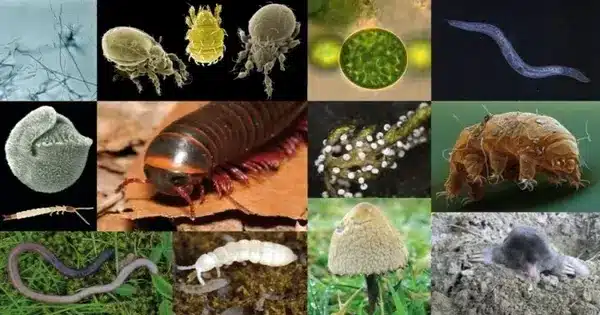Soil biodiversity refers to the variety and abundance of living organisms found within the soil ecosystem. It refers to the relationship of soil to biodiversity and to aspects of the soil that can be managed in relative to biodiversity. This biodiversity includes microorganisms such as bacteria, fungi, archaea, algae, and protozoa, as well as larger organisms like insects, worms, and other invertebrates.
Soil biodiversity relates to some catchment management considerations. Each of these organisms plays a vital role in maintaining soil health and fertility, as well as supporting plant growth and overall ecosystem functioning. Key aspects of soil biodiversity include:
- Nutrient Cycling: Soil organisms are involved in breaking down organic matter and recycling nutrients, making them available for plant uptake. For example, bacteria and fungi decompose dead plant and animal material, releasing nutrients like nitrogen, phosphorus, and potassium.
- Soil Structure: Soil organisms such as earthworms and termites help to aerate the soil and improve its structure through their burrowing activities. This improves water infiltration, root penetration, and overall soil stability.
- Pest and Disease Regulation: Some soil organisms, such as certain species of bacteria and fungi, can suppress soil-borne pathogens and pests through competition for resources or by producing compounds that inhibit their growth.
- Plant Health: Mycorrhizal fungi form symbiotic relationships with plant roots, enhancing nutrient uptake and providing protection against certain stresses.
- Carbon Sequestration: Soil organisms are involved in the decomposition of organic matter, a process that also contributes to the storage of carbon in the soil, helping to mitigate climate change.
Human activities such as deforestation, intensive agriculture, urbanization, and pollution can have detrimental effects on soil biodiversity, leading to reduced soil fertility, erosion, and loss of ecosystem services. Therefore, conservation and sustainable management practices are essential for preserving soil biodiversity and ensuring the long-term productivity and resilience of terrestrial ecosystems.
















